New Chromatography Columns and Accessories at Pittcon (Part 1)
LCGC Europe
Part I of Ron Major's report on new products introduced at Pittson. This month, columns are highlighted, covering all modes of high performance liquid chromatography (HPLC), ultrahigh-pressure liquid chromatography (UHPLC), and liquid-phase separations.
Part I of Ron Major's report on new products introduced at Pittcon. This month, columns are highlighted, covering all modes of high performance liquid chromatography (HPLC), ultrahigh-pressure liquid chromatography (UHPLC), and liquid-phase separations.
The Pittcon 2013 Conference and Expo (less formally known as the 64th Pittsburgh Conference on Analytical Chemistry and Applied Spectroscopy) was held for the first time in the city of Philadelphia, Pennsylvania, USA, on 17–21 March 2013. This year's event hosted over 1011 instrument manufacturers and laboratory suppliers in more than 1925 booths. In addition to attending the exposition, the conferees listened to more than 2200 technical presentations (orals, posters, workshops, invited and contributed talks, and award symposia), checked on numerous company seminar rooms, or attended one of 100 short courses.
Although the attendance was slightly up this year compared to last year, the average attendance had been shrinking over the last several years. Still, Pittcon remains one of the most important international analytical exhibitions where companies introduce their latest instruments, instrument accessories, software, columns, and sample preparation and other consumable products. Several notable companies were missing again this year, but enough were present such that visitors had plenty of opportunities to investigate new (and old) technologies.
The purpose of this report is to provide information about many of the new separation consumables and accessory products that were displayed at Pittcon 2013. In some cases, products that were introduced during 2012 but after Pittcon 2012 (1,2) may be included for reasons of completeness. The information is based on manufacturers' responses to a questionnaire mailed in early 2013. Because of space limitations and the fact that some manufacturers did not respond to the questionnaire, this report cannot be considered an exhaustive listing of all new products that were introduced in Philadelphia. However, over the years, these Pittcon introduction summaries have provided a good source of information that would be difficult for one individual to gather during the four days of the exhibition. In addition, the products introduced have shown definite correlations to current research, development, and application activity in the separation sciences.
As in previous years, columns and other products recommended by their manufacturers primarily for biomolecule separations or sample preparation are denoted in the tables with the designation BIO. Some of these products may be used for general high performance liquid chromatography (HPLC) separations as well, but their main emphasis is for biological samples.
In this month's coverage, I will describe new column introductions in the areas of HPLC, reversed-phase LC, normal and bonded-phase LC, hydrophilic interaction liquid chromatography (HILIC), supercritical fluid chromatography (SFC), ionexchange and ion chromatography, size-exclusion chromatography (SEC), and specialty chromatography.
Next month, I will look at gas chromatography (GC) columns, sample preparation products, and hardware, accessories, and small tabletop instruments, mainly for sample preparation. Part 2 will be available in the "Column Watch" section on www.chromatographyonline.com
Trends and Highlights
General: This year, I observed that there was a continuing trend in high-efficiency chromatography driven by dramatic increases in chromatographic efficiency, especially in HPLC or ultrahigh-pressure liquid chromatography (UHPLC). In addition, the introduction of more products with inert surfaces driven by instrumental increases in sensitivity especially through increasing use of tandem mass spectrometry (MS) techniques in both GC and LC. The development of systems with more inert flow paths including more PEEK-lined tubing, newer deactivated packing materials, deactivated surfaces such as fusedsilica columns, vials, metal tubing, and GC injection liners are all being addressed to improve recovery of very low levels of analytes.
In HPLC, there was a further increase for instrumental enhancements, hardware components, and accessories designed to work with UHPLC. Many application-specific columns for HPLC and GC that are tested with "real world" samples before shipment were noted. Again at Pittcon, a considerable number of new accessories, hardware, and devices were introduced that are designed to make the chromatographic laboratory more productive.
HPLC Columns: Overall, there were no real breakthroughs in HPLC column technology, but a refinement in particle sizes, stationaryphase technologies, and column dimensions was noted. Pittcon 2013 saw the introduction of a few more sub-2-µm columns for UHPLC, but not to the extent of several years ago. However, many new superficially porous particles (SPP, also known as core–shell), both particle sizes and phases, made their appearance including particles as small as 1.3 µm. UHPLC has now established itself as a viable solution to today's separation problems; at least nine major instrument vendors now address this market with instruments capable of operation at pressures as high as 19,000 psi. This year a few more HILIC columns appeared, but alternative reversed-phase selectivities, especially phenyl-hexyl and pentafluorophenyl phases, were evident at the booths of a number of column companies. Still, in the number of introductions, reversed-phase HPLC maintained its dominance. Applicationwise, chiral, protein (particularly monoclonal antibody columns), and ion chromatography or ion-exchange columns dominated.
Gas Chromatography: GC column introductions were dominated by new stationary phases, especially with new levels of inertness. However, chromatographers in the food, environmental, and forensic areas are finding that there is more than column inertness that must be addressed. Thus, ultra-inert total flow systems are under development, driven by the increased sensitivity of mass spectrometers. Porous layer open tubular (PLOT) columns with builtin particle traps to capture any tiny solid phases flaking off the columns made their appearance. Specifically, chiral compounds, polycyclic aromatic hydrocarbons (PAHs), volatile organic compounds (VOCs), semivolatiles, and fatty acid analyses were addressed in the applications' domain. A new polar ionic liquid column with much higher temperature capability than typical wax columns was shown for the first time.
Sample Preparation: Sample preparation products for automation, such as 96-well filtration and solidphase extraction (SPE) plates and plate seals and SPE micropipette tips, seemed to be in vogue. Because of the popularity of protein-crash approaches for the analysis of drugs and metabolites in biological fluids, filters (96-well plates and single tubes) designed to remove both precipitated protein and lipids or phospholipids were introduced. Affinity SPE phases for proteins and aflatoxins as well as a family of mycotoxins removal cartridges were noted. QuEChERS (quick, easy, cheap, effective, rugged, and safe) is still "catching on" as the favoured sample preparation technique for pesticides in fruits and vegetables. Some interesting phase separation columns might bring renewed interest to liquid–liquid extraction.
Accessories: More than 40 new hardware products, accessories, and benchtop instruments for LC, GC, and sample preparation were noted. This year I broke the hardware and accessories introductions from the benchtop instrumental introductions into two separate tables (available on-line). UHPLCspecific products (tubing, fittings, column hardware, and in-line filters) with higher pressure ratings and decreased dead volumes were introduced. Several automated sample preparation instruments contribute to minimize the labourintensiveness and drudgery of manually preparing samples for chromatography were introduced by smaller instrument vendors. This year a number of workstations that do some (but not all) of the sample preparation steps were evident. Products for preparing solid materials for further workup included homogenizers, shakers, and solvent evaporation stations. A unique sample card for direct analysis in real time (DART) MS was introduced that did away with lengthy sample preparation steps.
New Series of HPLC Columns and Packings
Each year manufacturers introduce entire new families of HPLC columns at Pittcon. For the sake of brevity, I have elected to cover those series here instead of listing each column under individual headings in the modes' tables. In some cases, the series are extensions of existing products but cover additional phases; in other cases the families are entirely new to the market.
New series of HPLC columns were shown by several companies (Table 1). With a wide range of particle sizes (made by the same process and chemistry) from UHPLC to preparative, seamless scaleup and scaledown within a family is possible. Method development can be performed on a short, fast analytical column and then can be scaled up to preparative dimensions with easy method transfer. Most introductions of new series included both sub-2-µm and larger particle versions.
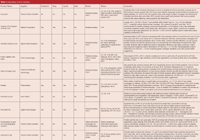
Table 1: New series of HPLC columns.
It seems like UHPLC is here to stay. Most new column introductions throughout this article have at least one sub-2-µm particle size in its family. The obvious advantage of such small particles is better column efficiency so that shorter columns can be used to accomplish the same separation as achieved on a longer column. The end result is that separation times are greatly decreased in proportion to the column length reduction. In addition, shorter columns with the same internal diameter run at the same flow rate save a proportional amount of solvent, which is always important these days with the cost of everything on the rise.
But the big news is that the introduction of SPP columns continues with a wild expansion of more phases and particle sizes from existing suppliers. These columns have caught on not only with those who have older, 400-bar systems, but also with those using UHPLC systems. In Table 1, several companies have greatly expanded their lines of SPP well beyond the normal C8 and C18 reversed phases. In addition, you will find later in this report of individual LC modes, additional SPP columns from other vendors. Truly, this new type of column seems to be catching on with the masses.
The SPP boom started out with particles sizes in the 2.6–2.7 µm range. These products gave efficiencies equivalent to the sub-2-µm columns that have been introduced over the last several years, but with about half of the pressure drop when compared to sub-2-µm columns with the same dimensions. If one compares columns operating at the same pressure, the SPP columns provide twice as many theoretical plates. Three years ago, Phenomenex came out with a 1.7-µm SPP (Kinetex) that gave higher plate counts than equivalent porous particles. Unfortunately, the instruments at the time were not of low enough band dispersion to provide the plates that such a small SPP should present. This year, Phenomenex has gone even lower to a 1.3-µm particle diameter with an array of their bonded phases. On the opposite side, other SPP companies have now gone to larger particles, 5 µm. The same concept holds true here. A 5-µm SPP gives the same efficiency as a 3-µm porous particle but the pressure drop is dramatically lower than the 3-µm column (of the same dimensions) and equivalent to a 5-µm porous particle column. It will be of interest to see if chromatographers gravitate to the larger-particle SPP columns as replacement for their 5-µm columns. Presumably, the United States Pharmacopeia will permit the use of these columns in validated methods.
Reversed-Phase Chromatography
As is usual, many new reversedphase chromatography columns were introduced at Pittcon 2013 (see Table 2). If one also adds all the columns capable of reversed-phase chromatography interactions covered in the new series (Table 1) and in specialty columns (Table 3), one can clearly see the dominance of this operational mode. This year at Pittcon more than 64 new reversed-phase chromatography columns were added to the huge numbers that already exist from past introductions. Silica-based bonded phase columns dominated the introductions again this year (˜95%), but three organic–silica hybrids and one polymeric column were also on the scene.
The C18 (octadecylsilane) functionality proved again to be the most popular with nearly 30% of all reversed-phase column introductions being this alkyl phase. However, this phase isn't always the optimum for all separations and a great number of other hydrophobic stationary phases were introduced. Besides the normal C8, C4, and phenyl phases, C18 with mixed functionality (such as di-isopropyl sterically protecting groups), phenylhexyl, diphenyl, embedded polar, pentafluorophenyl (PFP), cyanopropyl, AQ, and C30 phases were made available by various suppliers to present selectivity alternatives. HILIC columns that have some hydrophobic interaction possibilities are found later in this report.
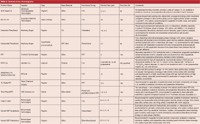
Table 2: Reversed-phase chromatography.
A number of PFP columns were introduced this year. This phase has pentafluorophenyl groups bound to the silica surface and provides a unique aromatic selectivity because of highly electronegative fluorine atoms on the periphery of the phenyl ring ligand. It is recommended for the separation of aromatic and halogenated compounds and offers a different selectivity compared to C8 and C18 columns. To illustrate the separation possibilities, Figure 1 shows the rapid baseline separation of six catecholamines on the Tokyo Chemical Industries 5-µm Stella PFP column using gradient elution.
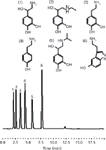
Figure 1: Separation of catecholamines on a TCI Stella PFP column. Column: 150 mm à 4.6 mm, 5-µm dp TCI Stella PFP; mobile-phase A: 5 mM formamide, adjusted to pH 3.5 with formic acid; mobile-phase B: methanol; gradient: 5â20% B in 10 min; flow rate: 1.0 mL/min; detection: UV absorbance at 254 nm; temperature: 25 °C. Peaks: 1 = noradrenaline, 2 = adrenaline, 3 = dopamine, 4 = tyramine, 5 = isoproterenol, 6 = serotonin. (Courtesy of Tokyo Chemical Industries.)
In recent years, there has been a trend in the introduction of bonded silica-based columns with wider pH limits. Most bonded phase silicas are recommended to be used in the 2–8 pH range. At low pH (<2), the bonded phase, especially those with short chain lengths, will hydrolyze, leaving behind bare silica. Consequently, retention times will generally change and peak tailing becomes a big problem. At high pH (>8), the silica gel itself will begin to solubilize; this process is dependent on the solvent, type of buffer, and temperature. By bonding carbon phases with sterically protecting groups, with high coverage of long alkyl groups, or by coating the silica with polymeric material, the lower pH range can be extended. By using organosilica hybrid chemistry, bidentate bonding, and polymer coatings or encapsulation, the range can be further extended to pH 12. This year YMC America, Inc., introduced Triart Phenyl hybrid columns with an encapsulation design that provides an extended range of pH 1–10. Advanced Chemical Technologies introduced a C18 column with a pH range of 1.5–12.
To show the value of having a selection of HPLC columns with different reversed-phase stationary phases in one's column inventory, Figure 2 provides a nice comparison of six different YMC reversed-phase columns run isocratically with the same phosphate buffer–methanol mobile phase. One can clearly see different elution orders as a function of the types of interactions these different test analytes (acid, basic, and neutral) showed. Most chromatographers think of C18 first when it comes to choosing a column, but this study shows that an alternative selectivity might actually be faster or provide more selectivity for analytes of interest.

Figure 2: Selectivity comparisons of a family of Triart columns using the same isocratic conditions: (a) C18, (b) C8, (c) Phenyl, (d) PFP, (e) YMC-Pack Ph, (f) YMC-Pack CN. Column dimensions: 150 mm à 3.0 mm, 5-µm dp; eluent: 25:75 20 mM H3PO4âKH2PO4 (pH 3.1)âmethanol; flow rate: 0.425 mL/min; temperature: 40 °C; detection: UV absorbance at 265 nm; injection volume: 4 µL. (Courtesy of YMC America, Inc.)
Columns for Supercritical Fluid Chromatography
Recently, there has been a resurgence of interest in SFC. With major instrument companies now pushing the technology, more users are trying out the technique to see what it might do for them. Columns companies are correspondingly addressing the column needs. Most columns for SFC are based on HPLC-like packings but often they contain different phase chemistries than those normally used in HPLC. Although normal bondedphase materials have been used, phases like 2-ethylpyridine, which are not found in the LC laboratory, are popular for the separation of basic compounds. At Pittcon this year, Nacalai USA/ChromaNik Technologies introduced its SunShell 2-ethylpyridine SFC column bonded onto a 2.6-µm SPP silica base material. Because supercritical fluid carbon dioxide used as a mobile phase already has a low viscosity when it is run on an SPP, rapid separations at very low pressure are a result.
The structural similarities between polar lipids such as cholesterol and related analogs have posed chromatographic challenges to analysts interested in quantifying these potential biomarkers. CosmosilQuinoline is another SFC phase from Nacalai Tesque, based on 5-µm porous (120Å) silica, that has been developed to improve the separation of these structural isomers by using the π-π interactions and structural rigidity of the naphthylethyl phase and the hydrogen bonding of the pyridine phase.
ES Industries, who recognized early that SFC would catch on, has been making SFC phases for a few years. Their product offering is called GreenSep because SFC with carbon dioxide mobile phase is considered biofriendly. GreenSep ODS-P is a silica-based product (120-Å pore size) with a C18 bonded phase but with special polar endcapping. Columns are available in particle sizes ranging from 1.8 to 20 µm and with dimensions from nano to preparative scale. For the ODS-P column, the phase coverage is 10% carbon. The column is said to be the first C18 phase specifically designed for SFC separations. The GreenSep DS-8 column is a rather special phase consisting of a mixture of phenyl and imidazole. Thus, it exhibits strong π-π interactions and provides an alternative selectivity to the ODS-P column. The phase has been found to be highly selective for the separation of diastereomers containing π electrons. Except for the stationary phase, the base silica, particle size, and column dimensions are the same as the ODS-P.
Size-Exclusion Chromatography
In the past few years, only a few new SEC columns have been introduced at Pittcon. That doesn't mean that SEC is not a highly practiced separation mode. It is a standard technique for the separation and characterization of organic polymers, both organic- and water-soluble. In addition, the mode is widely used for the separation of proteins and other biopolymers, sometimes known as gel filtration chromatography. Four companies (Phenomenex, Showa Denko, Waters, and Thermo Fisher Scientific) introduced columns for SEC at Pittcon 2013. Three of the introductions were earmarked for aqueous size separation of biomolecules and watersoluble polymers, and a new multipore column and small-particle hybrid particle columns for gel permeation chromatography were also seen.
The Phenomenex offering was a family of 3-µm silica-based aqueous SEC columns called Yarra. The family consists of three different pore sizes: 145-Å Yarra SEC-2000, 290-Å Yarra SEC-3000, and 500-Å Yarra SEC4000. Biocompatibility is achieved by bonding a proprietary hydrophilic ligand to the base silica. The stainless steel column dimensions were 300 mm × 4.6 and 7.8 mm and 150 mm × 7.8 mm. To protect the analytical columns, SecurityGuard cartridges are available for all three phases. The pH range for all three columns is 2.5–7.5, and the maximum flow rate for the two lowest pore sizes is 1.5 mL/min and for the 500 Å it is 1.2 mL/min. Suggested applications are proteins; peptides; PEGylated proteins, peptides, and IgG; biosimilars; antibodies; IgG aggregrates; and other biomolecules.
Thermo Fisher Scientific's Acclaim SEC columns for aqueous SEC are the company's new entry into this field. Instead of silica, the packing in the Acclaim column is a spherical, hydrophilic, monodispersed multipore polymethacrylate resin with a pH range of 2–12. Two pore sizes are available: the popular 300-Å size (Acclaim SEC300, 5-µm dp) and a wide-pore 1000-Å size (Acclaim SEC1000, 7-µm dp). Together these two pore sizes cover a calibration range of 100–1,000,000 Da. Analytical and semipreparative columns (300 mm × 4.6 mm, and 300 and 150 mm × 7.8 mm) along with matching guard columns are available. The recommended flow rate range is 0.2–1.0 mL/min. The Thermo phases are designed for the separation of water-soluble polymers and oligomers. The multipore resin provides a wide calibration curve without inflection points. The stable surface bonding provides low column bleed and is thus compatible with UV detection, refractive index (RI) detection, MS detection, evaporative light-scattering detection (ELSD), and charged aerosol detection.
The Showa Denko Shodex GPCLF-806 column is packed with a 9-µm styrene–divinylbenzene copolymer gel that is also a multipore type of packing material. It offers an extended molecular weight operating range compared to the GPC-LC-806 column; its exclusion limit is 15,000,000 Da (polystyrene as a standard). Thus, it is especially suitable for molecular weight distribution analyses of polymers that have a very large molecular weight (over 2 MDa) and for the separation or characterization of polymers in a wide molecular weight range. The linear calibration curve for this column shows no inflexion points. Typical solvents that are compatible with the column include tetrahydrofuran, dimethylformamide, chloroform, dimethylacetamide, and dimethyl sulphoxide. The column has a working temperature range of 20–60 °C.
Waters' entry consisted of new sub-3-µm Acquity APC (Advanced Polymer Chromatography) columns that were tied to a low-dispersion SEC instrument to take full advantage of the more efficient particle size. The columns are based on ethylene bridged hybrid (BEH) chemistry, which forms a stable bed that resists the swelling and shrinking that occurs with conventional polymeric stationary phases. The APC XT range of columns is designed for organic-based separations, and the APC AQ columns are compatible with aqueous-based separations.
Ion-Exchange and Ion Chromatography
Ion-exchange- and ionchromatography are interchangeable in that they both use the same technology and often the same phases. Dionex, now firmly established under the Thermo Fisher Scientific umbrella, has long been an innovator in the separation of ionic species. Capillary columns are typically columns with internal diameters under 0.5 mm. They have two main advantages. The first is higher sensitivity in a sample-masslimited situation. If the same mass of sample is injected onto a column with a smaller internal diameter, the peak height will increase and perhaps will enable the measurement of smaller analyte concentrations. Second, to maintain the same separation time, the linear velocity must be the same. For a column with a smaller internal diameter, this means that the flow rate must be decreased proportionally to the inverse radius-ratio squared. This result is lower usage of solvent.
Last year, Dionex introduced a new family of 250 mm × 0.4 mm capillary ion chromatography columns. This year the company has expanded that capillary line to include the CarboPac PA-10 phase, a quaternary amine anion-exchange column, recommended for the separation of mono- and disaccharides in foods, drugs, and plants as well as those found in mammalian glycoproteins. Separation is accomplished with a simple isocratic eluent pulsed amperometric detection (PAD) without any derivatization required. A matching guard column (50 mm × 4.6 mm) is available. Figure 3 shows an isocratic baseline separation of saccharides using a 250 mm × 0.4 mm version of this column. The two chromatograms show the effect of adding a guard column to the separation system. Because of the added length (an additional 50 mm), retention time is increased proportionally, in this case by about 20%. Using a guard column is a very good way to protect the expensive analytical column but one should make sure that the added dead volume doesn't affect peak efficiency. By good hardware design, the guard column should have little or no effect on the peak widths or tailing factors.
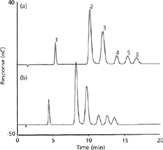
Figure 3: Separation of saccharides on a CarboPac PA10 column (a) with and (b) without a guard column. Column: Dionex CarboPac PA10 capillary; eluent: 100 mM potassium hydroxide; eluent concentration: -40 min 100 mM (strong wash), -25 min 100 mM, -24.9 min 18 mM (equilibration), 0 min 18 mm (loadâinject), 20 min 18 mM; eluent source: EGC-KOH cartridge; temperature: 22 °C; flow rate: 0.01 mL/min; injection volume: 0.4 µL/ detection: integrated amperometry, quadruple pulse waveform; working electrode: PTFE Gold, disposable; reference electrode: AgâAgCl. Peaks: 1 = fucose, 2 = galactosamine, 3 = glucosamine, 4 = galactose, 5 = glucose, 6 = mannose. (Courtesy of Thermo Fisher Scientific.)
The other capillary column to join this family is the IonPac AS16 column, recommended for analysing trace perchlorate in drinking water in accordance with US EPA Methods 314.0 and 314.1 (Primary Method). The Dionex IonPac AS16 column simplifies the determination of polarizable anions, including thiosulphate, iodide, thiocyanate, and perchlorate using an isocratic hydroxide eluent. The column has the same dimensions as the CarboPack PA-10 column but has alkanol quaternary ammonium functionality.
For both columns, the capillary format is packed with the same material as the equivalent standardbore and microbore versions (providing the same performance as 4-mm and 2-mm columns, respectively), but requires only 1/100th the eluent flow rate. The capillary format provides the advantage of significantly reduced eluent consumption, which helps reduce operating costs. The IonPac AS16 capillary column is also used in the second dimension of the two-dimensional ion chromatography method for the analysis of trace perchlorate (sub-parts-per-billion levels) in drinking water.
Specialty HPLC Columns
Specialty columns are HPLC columns that have been developed for specific separations that are difficult to achieve on a standard column. However, sometimes manufacturers will use a standard column but will test it specifically for a certain class or compounds and provide a recommended set of chromatographic conditions. In some cases, the specialty column comes as part of a "total solution" kit with reagents, standards, and a method. Most specialty columns will be delivered with a test chromatogram from an analysis performed at the factory before shipment, and some are guaranteed for a specific separation. Table 3 shows the 18 specialty columns that were presented at Pittcon 2013. Silica gel–based columns dominated the introductions, but polymer-based specialty columns and packings were also introduced.
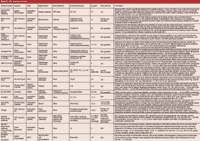
Table 3: HPLC specialty columns.
As depicted in Table 3, the three main application areas that dominated the specialty column introductions were proteins, particularly antibodies; chiral compounds; and peptides. The protein columns were based on multiple separation modes (cationexchange, anion-exchange, reversed-phase, size-exclusion, affinity, and mixed mechanisms). For many years, the study of monoclonal antibodies has been a hot area in the potential development of biopharmaceuticals for diagnostics and clinical uses. A number of monoclonal antibody–based drugs have been approved by the U.S. Food and Drug Administration. For the purification and polishing of very large biomolecules like viruses, the Capto Core 700 from GE Healthcare uses a size-exclusion mechanism to keep the biomolecules from entering the rather large pores while small contaminants will enter the pores and interact with either hydrophobic groups or anionexchange functional groups and be trapped.
Chiral separations are still in the forefront especially in the pharmaceutical industry. Six new chiral HPLC columns were introduced at Pittcon 2013 (see Table 3), based on modified cellulose, amylose (polysaccharide), and protein phases. An interesting zwitterionic quinidinederived phase that separates underivatized amino acid- and peptide-enantiomers was shown by Chiral Technologies. In addition, Chiral Technologies expanded its offering of immobilized polysaccharide-derived chiral stationary phases, first introduced in 2008 at Pittcon. These immobilized phases are more stable than the coated phases and have found use in both HPLC and SFC. Being immobilized, they can be used with a wider variety of mobile phases and pH values. Since many analytical separations are scaled up to obtain larger quantities of purified enantiomers, preparative particle sizes are frequently part of column introductions, hence some particles as large as 20 µm were displayed.
Peptide mapping is a widely used protein characterization technique in the biopharmaceutical industry, and two new peptide mapping columns have been introduced. The Agilent Technologies Peptide Mapping column, part of the AdvanceBio series, is based on superficially porous particles with an endcapped C18 phase and delivers a low pressure drop with excellent efficiency. The Fortis Technologies column is a fully porous material and is based on a sub-2-µm silica with a 300-Å pore size and C18 bonding chemistry. To illustrate the potential for protein identity and identification of any posttranslational modifications using peptide mapping, Figure 4 shows the use of the AdvanceBio Peptide Mapping column and gradient elution to determine the peptide map of a recombinant glycoslylated protein, erythropoietin (EPO). The UV detection output is useful for comparing peptide maps and the MS is ideal for identifying amino acid substitutions and modifications.
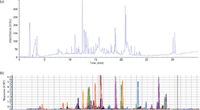
Figure 4: Peptide mapping of digested EPO protein (recombinant humanized) using (a) LCâUV and (b) LCâMS (Agilent LC/MS TOF). Column: 250 mm à 2.1 mm AdvanceBio Peptide Mapping; mobile-phase A: water with 0.1% formic acid; mobile-phase B: acetonitrile with 0.08% formic acid; temperature: 55 °C; flow rate: 0.5mL/min. (Courtesy of Agilent Technologies.)
Acknowledgment
I would like to thank the manufacturers and distributors that kindly furnished the requested information in advance of Pittcon 2013, thus allowing a timely report on new product introductions. For those manufacturers who would like to be considered for inclusion into Pittcon 2014 coverage, please send the name of the primary company contact, the mailing address, phone number, and e-mail address to Laura Bush, Editorial Director, LCGC Europe and LCGC North America, lbush@advanstar.com, with the subject line "Pittcon 2014 Column Watch."
References
(1) R.E. Majors, LCGC No. America 30(4), 290–310 (2012).
(2) R.E. Majors, LCGC No. America 30(5), 376–390 (2012).
"Column Watch" Editor Ronald E. Majors is a senior scientist at the Columns and Supplies Division, Agilent Technologies, Wilmington, Delaware, USA and is a member of LCGC Europe's editorial advisory board. Direct correspondence about this column should be addressed to "Column Watch", LCGC Europe, 4A Bridgegate Pavilion, Chester Business Park, Wrexham Road, Chester, CH4 9QH, UK, or e-mail the editor-in-chief, Alasdair Matheson, at amatheson@advanstar.com.
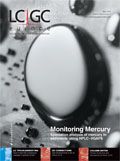
New Study Reviews Chromatography Methods for Flavonoid Analysis
April 21st 2025Flavonoids are widely used metabolites that carry out various functions in different industries, such as food and cosmetics. Detecting, separating, and quantifying them in fruit species can be a complicated process.
Extracting Estrogenic Hormones Using Rotating Disk and Modified Clays
April 14th 2025University of Caldas and University of Chile researchers extracted estrogenic hormones from wastewater samples using rotating disk sorption extraction. After extraction, the concentrated analytes were measured using liquid chromatography coupled with photodiode array detection (HPLC-PDA).

.png&w=3840&q=75)

.png&w=3840&q=75)



.png&w=3840&q=75)



.png&w=3840&q=75)






